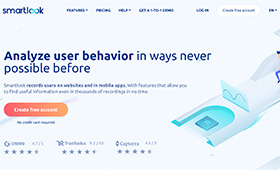Empathy in UX Design
Empathy – the capacity to recognize emotions that are being experienced by another person – is one of the many ‘soft’ skills a great UX designer should possess. Empathising with users leads to a genuine understanding of how to solve their problem and ultimately building better products.
Many great authors have written about the subject. I have collected some of the best articles out there for your comfort. Enjoy.
User Experience: Using Empathy to Empower Your Users – Alexander Dawson
Alexander wrote his article back in 2010. In my opinion, a great article about the value and consequences of empathy in design.
Empathy is Not a Buzzword – Whitney Hess
Whitney Hess, a well known user experience coach with a mission to put humanity back into business (admirably so), explains why integrating empathy and compassion into the design process is so crucial.
Empathy requires experience – Paul Boag
Paul Boag wrote a great article about empathy and why we should broaden our horizons as a person, not just as a designer, beyond the web and technology.
50 Design Problems in 50 days: Real Empathy for Innovation – Pete Smart
Pete has travelled 2517 miles to try to solve 50 problems in 50 days using design — a journey that would challenge him to fundamentally rethink my understanding of the user-experience design process. A great story about the power of empathy to foster innovation.
Empathy at Work – Amy Marquez
Amy Marquez, a senior user experience designer for a Texas-based Fortune 500, explains what you can learn from daily experiences and conversations and how to use that in your professional life.
Empathy and User-Centered Design: Going Method – Laura Ballay
User Experience Director Laura Ballay, who is also teaching a User Experience course, had a similar setup as Pete Smart. She divided her class into several teams and each team adopted a new persona: one team had a manual wheelchair, another team a double stroller or blurred glasses and earplugs, restricted joint movement, etc.
The goal was not really to learn about what it would be like to live as these personas but to understand how many common, routine things are perceived very differently once you change the circumstances. A great story about understanding and improving products by empathy.
Storytelling for User Experience – Crafting Stories for Better Design – Kevin Brooks, Whitney Quesenbery
In user experience, stories help us to understand our users, learn about their goals, explain our research, and demonstrate our design ideas. No better way to read about it in “Storytelling for User Experience“.
Interesting study
You believe you’re lacking empathic abilities to do the job? No worries.
In a study, titled “How Does Fiction Reading Influence Empathy? An Experimental Investigation on the Role of Emotional Transportation”, Matthijs Bal and Martijn Veltkamp investigated whether fiction experiences change empathy of the reader.
The study showed that reading fiction does influence empathy of the reader, but only under the condition of low or high emotional transportation into the story.
What about you?
So how do you empathize with your users? Do you believe this is an ability which you could learn or train? Let us know!







No responses yet to “Empathy in UX Design”